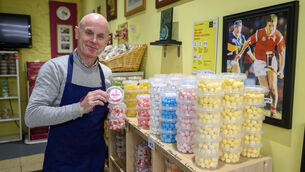The community of model boat makers that meets at Cork’s Atlantic Pond

Members of the Atlantic Model Boat Group with some of their model boats and trucks before their sail at the Atlantic Pond, Cork, (front) Donal Dinan (left) and Eoin O'Mahony with (back from left) Stephen Dawes, Jerry O'Sullivan, William Kelleher, Brendan Buckley and Michael Murray. Pictures: Denis Minihane.
The winter sun is shining wanly on the Atlantic Pond, and the morning is cool enough this Sunday down on Cork’s Marina, where model boats bob on the water and walkers stop for a look.
The rain has held off, and it feels as though half of Cork is out for a stroll in the shadow of Páirc Uí Chaoimh, young and old, some arm-in-arm, some holding hands, some walking dogs, or navigating prams or strollers, a steady stream of humanity in winter coats and bobble hats.
Down at the shore, Eoin O’Mahony of the Atlantic Model Boat Group is gently lowering his five-foot-long model of the dredger Ringacoltig into the water.
As he guides his boat out by remote control, the pond’s well-fed duck and swan community scatters. Eoin, who served 30 years in the Merchant Navy, says that once they realise there’s no food in it for them, they tend to head away to find easier marks.
“Mind you, I once had a model U-boat, and when it was underwater, the swans used to chase it all over the pond, thinking it was a pike or something,” he says.
Rose Crowley is a GP based in Blackrock, and she and her son Ted, who is four, walk here most Sunday mornings, and love to watch the boats on the pond.
Ted says the boats are really good. Unfortunately, Rose says, Covid-19 has put paid to the modellers letting kids such as Ted operate the boats by remote control, but they are still unfailingly kind to visitors.
Out on the pond, a model of the Imara, a tug boat built in 1932 on the Clyde, tows a barge. Its land-bound pilot, Michael Murray, explains that the tug is kit-built, meaning it was built from purchased parts, whereas the barge was built from scratch.

“I’m so proud of that barge,” he says. “It was scratch-built by my father, Michael Murray Senior, as a present for my 49th birthday. Imagine getting that for your birthday!”
Ber and Dan Bevan from Frankfield are out this morning with their grandchildren. Dan worked “for years” at the . Bobby is nine months, and snoozing in the pram, while Jack, aged five, is fascinated by the boats. Jack knows pretty much all there is to know about the Titanic, from its origins in Belfast to its fateful maiden voyage, from its ill-starred captain (“Edward Smith”) to the number of people who perished (“over 1,500”).
Jack is delighted at the sight of the Ringacoltig “bubbling up the water”.
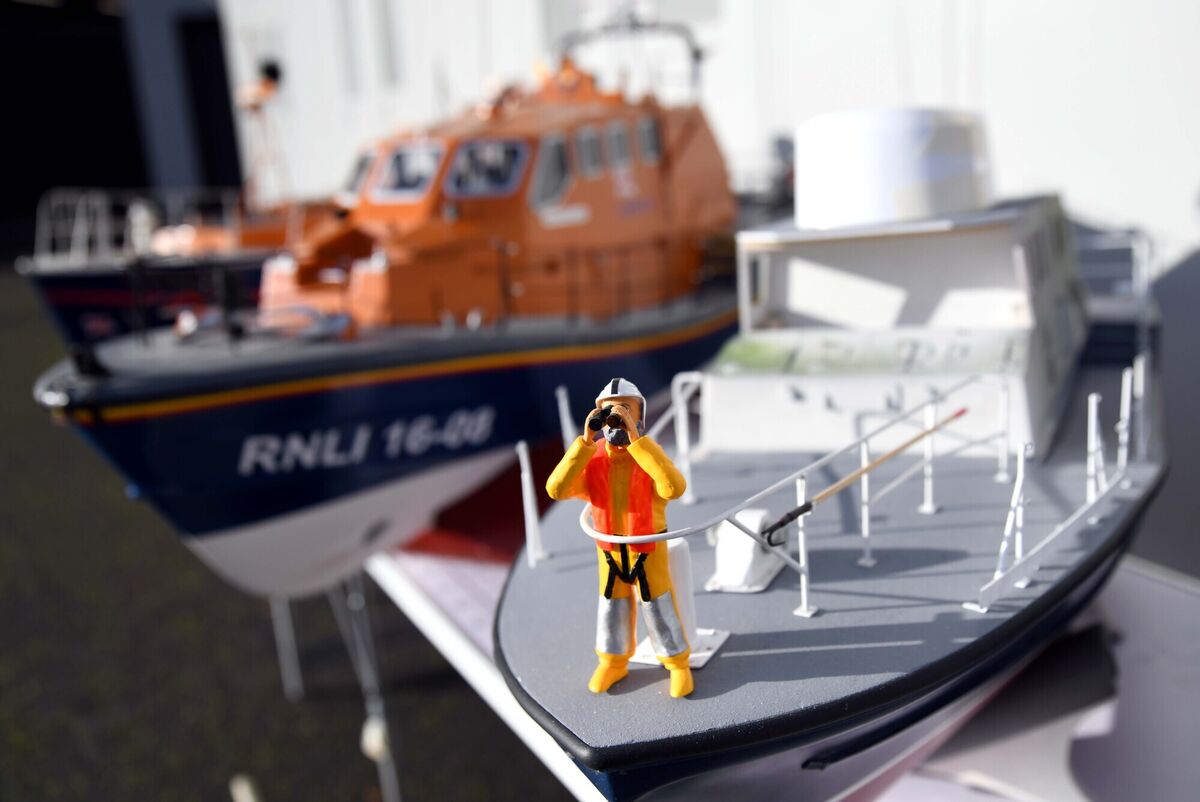
Faster than the other boats, a scale model RNLI lifeboat bounces along the surface of the pond, startling a swan.
“Boys and their toys,” murmurs Jerry O’Sullivan good-naturedly as he operates the lifeboat by remote control. He’s considered the most senior of the modellers, and he’s referred to by his friends as “The Admiral”, a title which he claims to find a little embarrassing. A roguish smile suggests otherwise.
Jerry says that if he had one wish, it would be that Cork City Council might agree to build a launching area as part of their Marina development.
“Boats have been part of the Atlantic Pond since the 1950s, and we’ve been sailing models here since the late ’80s," he says. "This is part of our heritage. We’re very hopeful that someone will listen. We might have to go to Micheál Martin himself.”

Donal Dinan and Stephen Dawes are passionate model builders, and, as a small crowd mills socially distantly around, they stress the therapeutic advantages of their hobby.
“I’ve been building models since I was 11, and that’s not today or yesterday,” Donal says. “I’m in my early 50s now, and really I almost never finish a model. Instead, I tend to jump to the next project.
“The biggest investment with building models is time, but that pays off in mental health benefits.”
Stephen agrees: “Times like these, it can take your mind off the hardships we’re all facing. It’s a hobby that can be put away when life takes you elsewhere and picked up again later.”
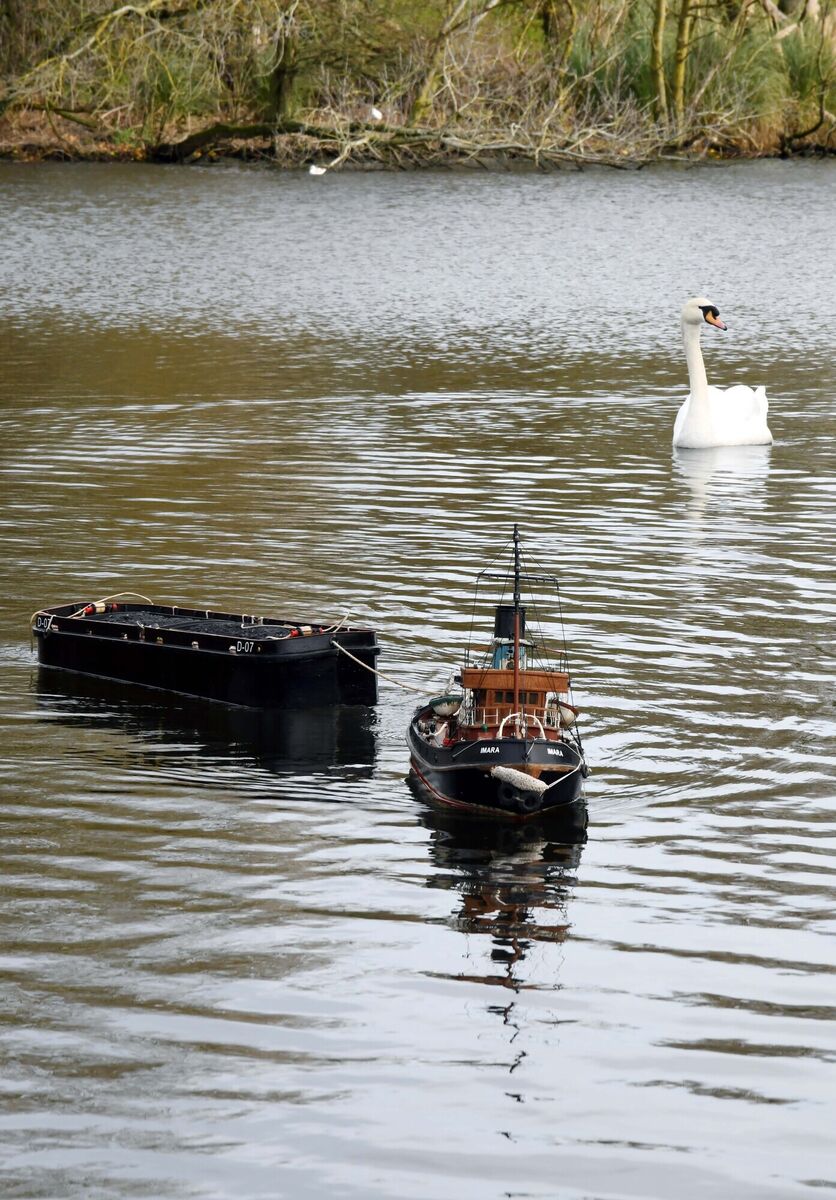
Donal says the best thing about model-building is that it’s a hobby for everybody.
“At the very base level, anyone can do this. You can build models out of cardboard and, once your model is properly sealed with a decent sealant, you can float it on the water.
“I would say to people ‘come out here, meet us on a Sunday morning, and we’ll help you get set up’.
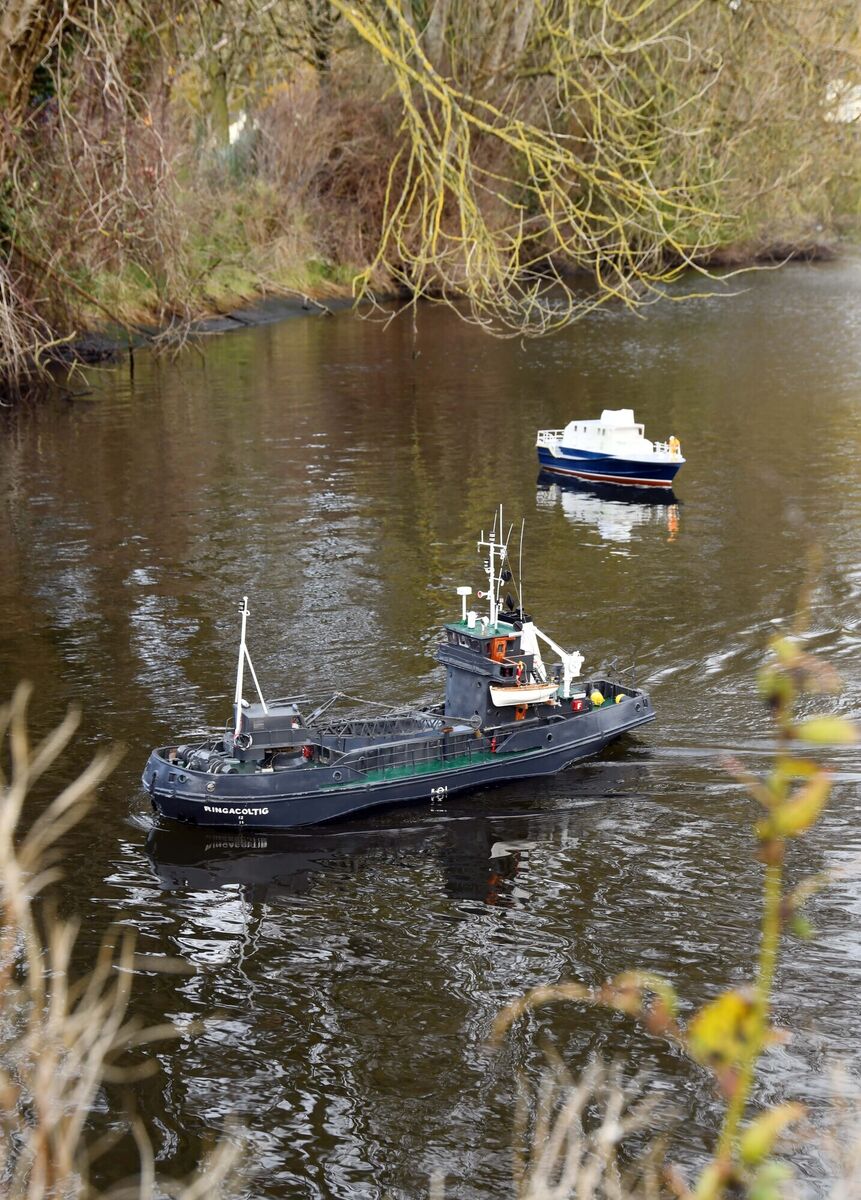
“Bottom line — this should be all about fun, and if you look around, you can see the joy these model boats bring to so many people.” With so many people out enjoying the Marina these days, the Atlantic Model Boat Group certainly brings sparkle and splash to the weekend waters.
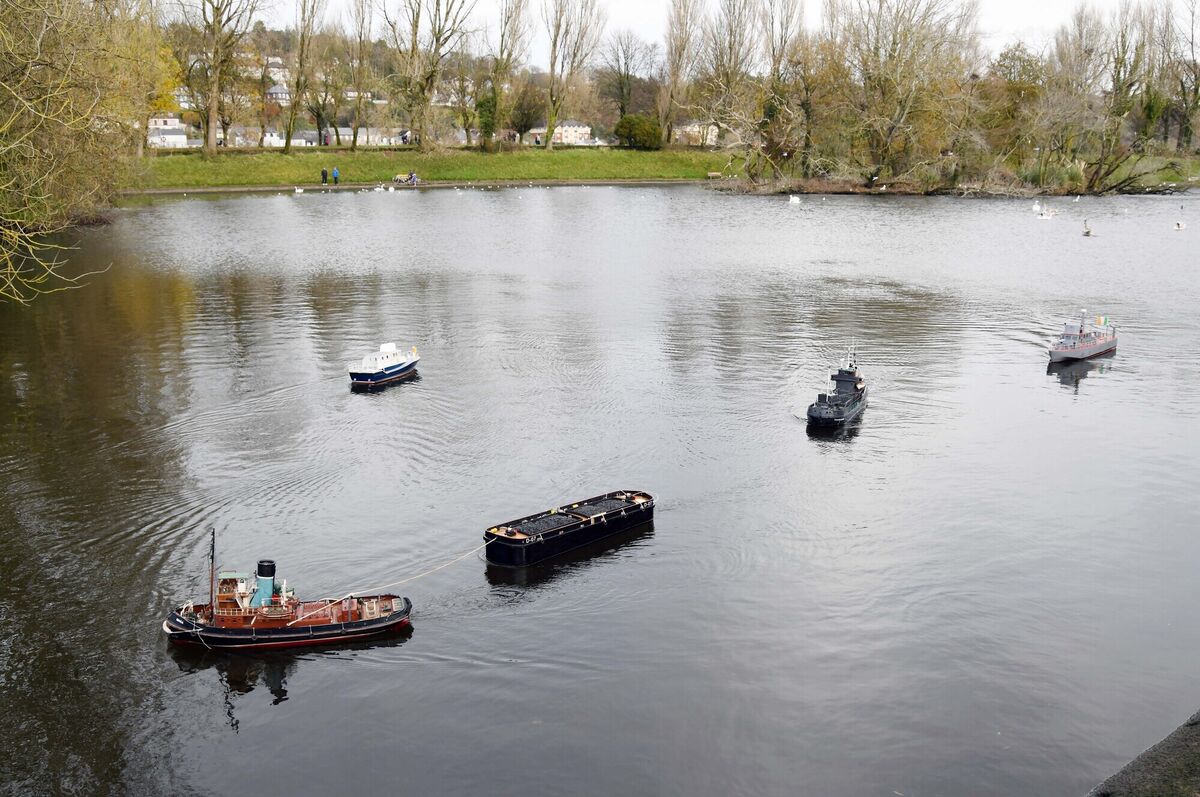
I like building models of boats which work or worked around Cork or around Ireland, and there’s an interesting history to the dredger Ringacoltig.
She was built in 1974 in the Verolme Dockyard in Rushbrooke in Cobh for the Cork Harbour Commissioners. Her job was to dredge the city quays, clearing up to 500 cubic metres of liquid mud and muck and shopping trolleys at a time.
She was working the quays until 2003, when she left Cork, ending up in Spain, and then Portugal, where she was finally scrapped only three years ago.
I did some research and I found that there were no plans [of the dredger] available, so I contacted her new owners in Portugal and they sent me pictures of the vessel and some basic plans. I redrew all the plans and then I started scratch-building, using marine-grade plywood.
The model is over five feet [1.5m] in length and made from timber, fibreglass, brass fittings, copper, and plastic. I used plastic called Foamex, because it’s easy to cut and easy to bend. When the hull was built up from the framework, I sheathed it all in fibreglass, smoothing it down, painting, and then adding the electrics.
I installed the electric motors and the gearbox, and the steering system, and then a water pump system, just adding to it all the time.
I added a smoke generator — it’s not working at the moment — but it used to blow smoke from the stack. Everything works off the main battery.
In terms of financial cost, my model of the Ringacoltig was cheap as chips to build, because I already had a lot of the materials, and a lot of it is scrap-based, bits and pieces of brass, copper, plastic. Some extras cost a bit, like glue and fibreglass, but it’s still small money at the end of the day.
Time is definitely the biggest investment. The only good thing I got from the lockdown was that I was able to complete the boat to where it is today. If there had no lockdown, it would never have been finished.
Any model is like a blank canvas. You can put in as much work as you want or as little.
It’s a labour of love.






